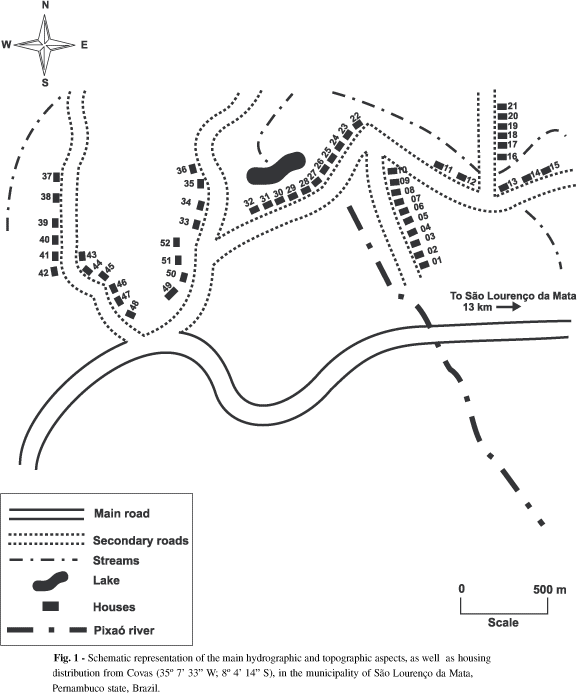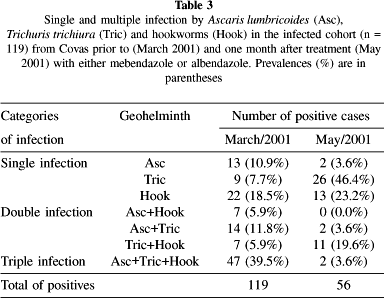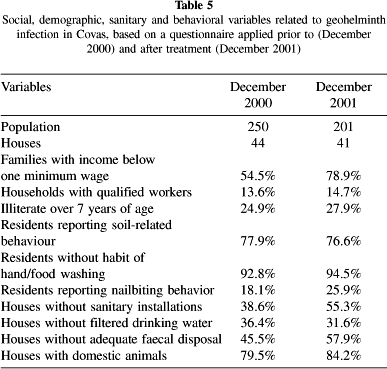This work aims to evaluate the impact of drug treatment on infection by Ascaris lumbricoides (Al), Trichuris trichiura (Tt) and hookworms (Hook) in a rural community from the sugar-cane zone of Pernambuco, Brazil. Four parasitological surveys were carried out from March 2001 to March 2002. Individual diagnosis was based on eight slides (four by the Kato-Katz method and four by the Hoffman method) per survey. Infected subjects were assigned to two groups for treatment with either albendazole (n = 62) or mebendazole (n = 57). Prevalence of infection fell significantly (p < 0.05) one month after treatment: Al (from 47.7% to 6.6%); Tt (from 45.7% to 31.8%) and Hook (from 47.7% to 24.5%). One year after treatment, infections by Tt and Hook remained significantly below pre-control levels. A substantial decrease in single-infection cases and multiple infections was found. Egg-negative rate was significant for Al (94.0%), Hook (68.3%) but not for Tt (45.5%), and did not differ significantly between subjects treated with mebendazole or albendazole. Egg counts fell significantly in the individuals remaining positive for Tt. It is recommended that antihelminthic treatment should be selective and given at yearly intervals preferably with albendazole, due to its cost-effectiveness.
Mebendazole; Albendazole; Geohelminthiasis; Rural Area








